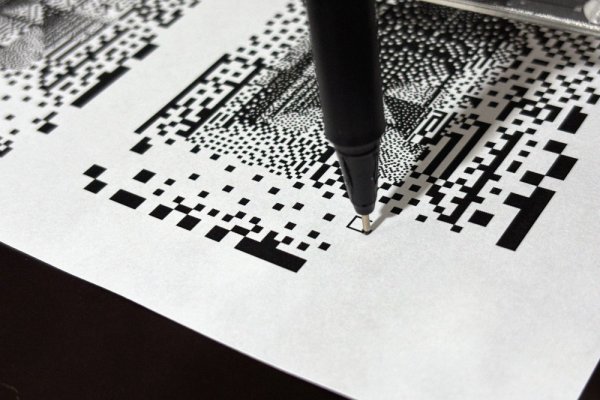CO-lab
Eröffnung:
Laufzeit:

The CO-lab project deals with the question of authorship in art. A
question that has been raised in a completely new way by the spread of text and image-generating AI.
The tools used by visual artists in particular have a significant influence on their works. This can be seen in the end result, the approach and even the idea. But what happens when the tool no longer just influences an idea or a work, but is its origin? And is a tool still a tool or already a collaborator as soon as it actively shapes it?
CO-lab explores the relationships between artist, tool and work by testing and blurring boundaries.
The exhibit expands the question and invites exhibition visitors to participate collaboratively. Photos are taken at regular intervals, which are algorithmically processed and drawn by the machine. The visitors become part of the artwork - either passively, because they can be seen in the image without doing anything, or actively, by deliberately placing themselves in front of the camera.
The use of AI is deliberately avoided throughout the project - for ethical reasons, but also to emphasise processes that would otherwise take place in a black box. In addition, the entire process, from the concept to the implementation procedures, is documented in multimedia and made freely available online.
The Co-Lab project deals with the question of authorship in art. A question that has been raised in a completely new way by the spread of AI for generating text-based content (LLM, Large Language Models) and image-generating AI. Nina Botthof's "Drawing Machine" addresses this problem in that the gradual outsourcing of operational processes in the development and realisation of a drawing is decisive for her "operating system". At the same time, Co-Lab functions as an experimental set-up for the artistic possibilities of mechanical drawing.
Copyright vs. cooperation
The tools used by visual artists in particular have a significant influence on their works. This is reflected nolens volens in the end result, but the approach and even the original idea are also characterised by the use of the respective tools. Until now, the influence of tools - whether hammer and chisel, computer and screen - has primarily related to the manual aspects of a work of art; however, LLMs and AI image generators can outsource many parts of the conceptualisation process. So if new technologies are already influencing project development, how big is the artist's contribution to "their" work? And - how does this shift in competences in the creation process of art influence the perception of authorship?
In her work Co-Lab, Botthof deliberately refrains from using AI - on the one hand, out of opposition to the current hype and for ethical reasons (many common AI models violate copyrights and use artists' works for training without their consent), on the other hand, it succeeds in clarifying processes that would otherwise take place in a black box. At the same time, she derives an aesthetic benefit from the generative deceleration: by inscribing the impact of different materials and media on the aesthetics of the work in different ways - documentary, collaborative ... - the relationship between man and technology becomes the subject of the work using a practical example of art.
Open Source
The entire process, from the concept to the methods of realisation, is documented in multimedia form and made freely available online as its source code. In addition, interactive formats give the public the opportunity to participate in the project. How this type of collaboration affects the perception of authorship allows conclusions to be drawn about the "collaborative processes" in an AI black box.
Selected machine drawings are available for sale online for co-financing. This allows interested parties to provide additional support for the project.
